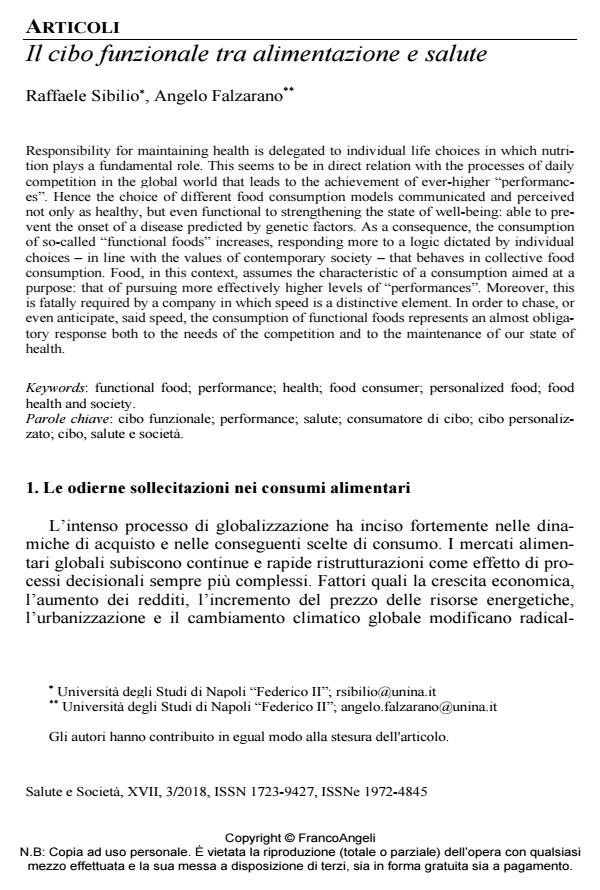Il cibo funzionale tra alimentazione e salute
Titolo Rivista SALUTE E SOCIETÀ
Autori/Curatori Raffaele Sibilio, Angelo Falzarano
Anno di pubblicazione 2018 Fascicolo 2018/3
Lingua Italiano Numero pagine 15 P. 9-23 Dimensione file 212 KB
DOI 10.3280/SES2018-003002
Il DOI è il codice a barre della proprietà intellettuale: per saperne di più
clicca qui
Qui sotto puoi vedere in anteprima la prima pagina di questo articolo.
Se questo articolo ti interessa, lo puoi acquistare (e scaricare in formato pdf) seguendo le facili indicazioni per acquistare il download credit. Acquista Download Credits per scaricare questo Articolo in formato PDF

FrancoAngeli è membro della Publishers International Linking Association, Inc (PILA)associazione indipendente e non profit per facilitare (attraverso i servizi tecnologici implementati da CrossRef.org) l’accesso degli studiosi ai contenuti digitali nelle pubblicazioni professionali e scientifiche
Responsibility for maintaining health is delegated to individual life choices in which nutrition plays a fundamental role. This seems to be in direct relation with the processes of daily competition in the global world that leads to the achievement of ever-higher "performances". Hence the choice of different food consumption models communicated and perceived not only as healthy, but even functional to strengthening the state of well-being: able to prevent the onset of a disease predicted by genetic factors. As a consequence, the consumption of so-called "functional foods" increases, responding more to a logic dictated by individual choices - in line with the values of contemporary society - that behaves in collective food consumption. Food, in this context, assumes the characteristic of a consumption aimed at a purpose: that of pursuing more effectively higher levels of "performances". Moreover, this is fatally required by a company in which speed is a distinctive element. In order to chase, or even anticipate, said speed, the consumption of functional foods represents an almost obligatory response both to the needs of the competition and to the maintenance of our state of health.
Parole chiave:Cibo funzionale; performance; salute; consumatore di cibo; cibo personalizzato; cibo, salute e società.
Raffaele Sibilio, Angelo Falzarano, Il cibo funzionale tra alimentazione e salute in "SALUTE E SOCIETÀ" 3/2018, pp 9-23, DOI: 10.3280/SES2018-003002